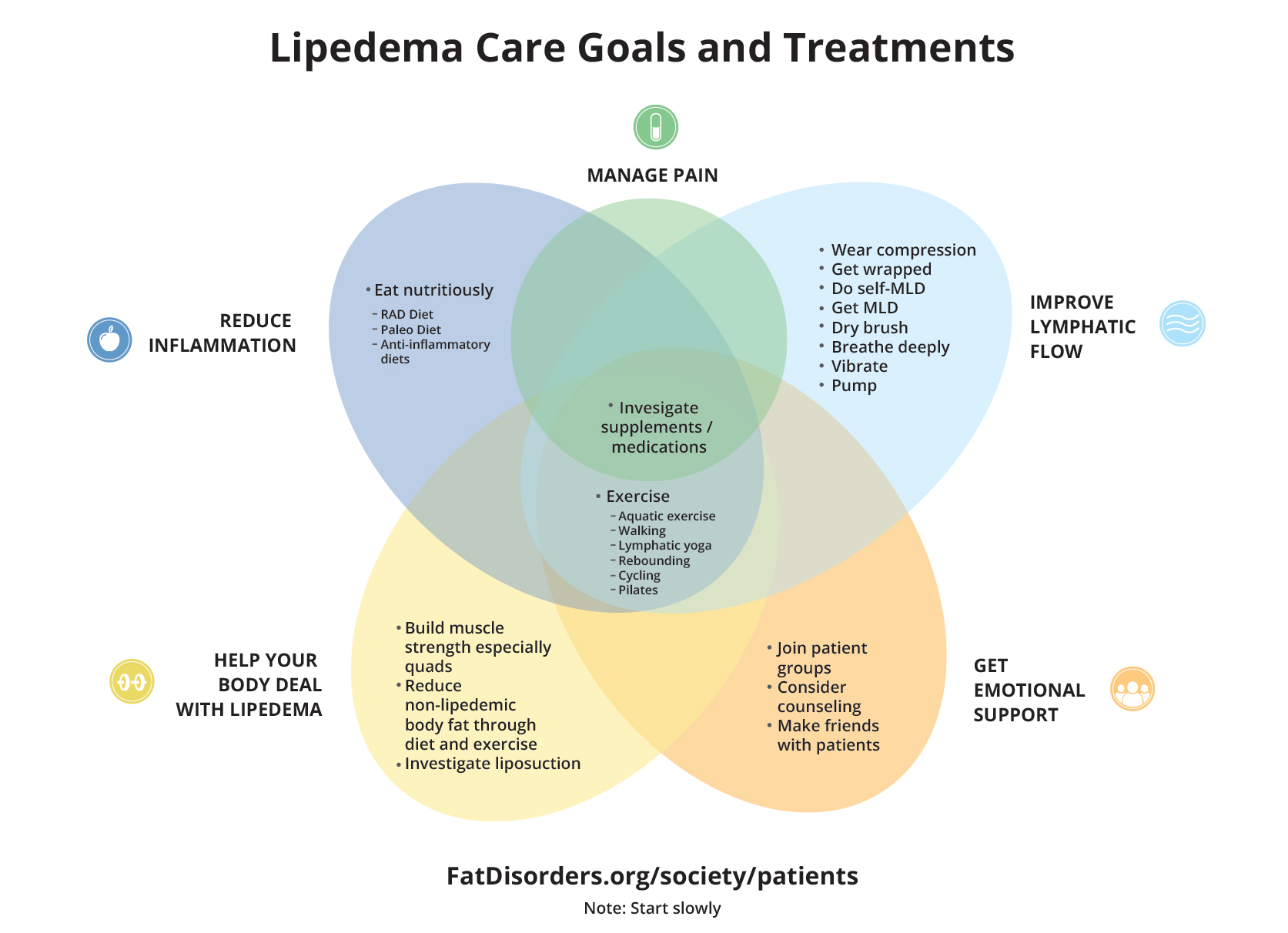Treating Lipedema
The goals of treating Lipedema are to: Reduce inflammation, manage pain, improve lymphatic flow, receive emotional support, and help the body deal with Lipedema. Many treatments can be done cheaply at home by the patients and are demonstrated and discussed on FDRS's YouTube's Self-Care playlist.
Lymphedema Therapists are a first line of defense in treating Lipedema patients. To the extent that an individual swells, therapists can treat the swelling. Manual treatment may also improve the quality and health of tissue.
Educated patients find relationships with sympathetic physicians very beneficial.
See our Resources page for YouTube treatment videos.
As you consider treatments to try, keep in mind which are “conservative” meaning not surgical, and which are surgical. In the US, it is easier to get insurance to approve surgery if you demonstrate that you first tried the conservative treatments. Moreover, some surgeons will not operate unless you first establish good routines with conservative treatments. Surgery does not correct the underlying issues, and you will still need good conservative habits after surgery.
Conservative Treatments
Conservative treatments can be thought of as lifestyle changes (better nutrition and more moderate exercise), mechanical (MLD, compression garments and compression pumps), and supplements/medications. Treatments that are cheap and easy to start include deep breathing, dry brushing and walking.
Nutrition
Nutrition suggestions vary, but are generally aimed at eating less inflammatory foods. Reducing calories does not reduce Lipedema fat, and there is growing evidence showing that reducing calories too much encourages your body to store more fat. Paleo, keto, LCHF, RAD and anti-inflammatory diets are some of the recommended diets. One well-researched nutrition book has been created for Lipedema patients specifically; see here. As you consider different nutrition plans, do your research to see what typically happens if you stop the plan.
Exercise
Exercise recommendations are usually: walking, aquatic exercise of any kind, Pilates, cycling, and yoga. The goals are to get the lymphatic system moving, take care of your joints if you are hypermobile, and build strength to help combat extra weight. Lots of information exists on mechanical treatments such as MLD, compression garments and pumps. The information is usually aimed at patients with lymphedema, but are also often applied to Lipedema.
Outreach
You will want to find a physician and therapist who are willing to learn about Lipedema and are local to you. Since awareness is a problem in the US, print out the Giving Smarter Guide and other documentation, and bring it to the appointments with you. You may find that asking the Facebook groups for recommended providers in your area shortens the search.
Supplements
Keep in mind that supplements are not tested by the FDA so there is no way to know about possible side effects. Most diuretics do not help alleviate the swelling of Lipedema.

